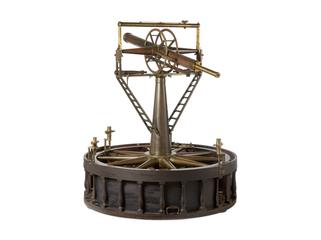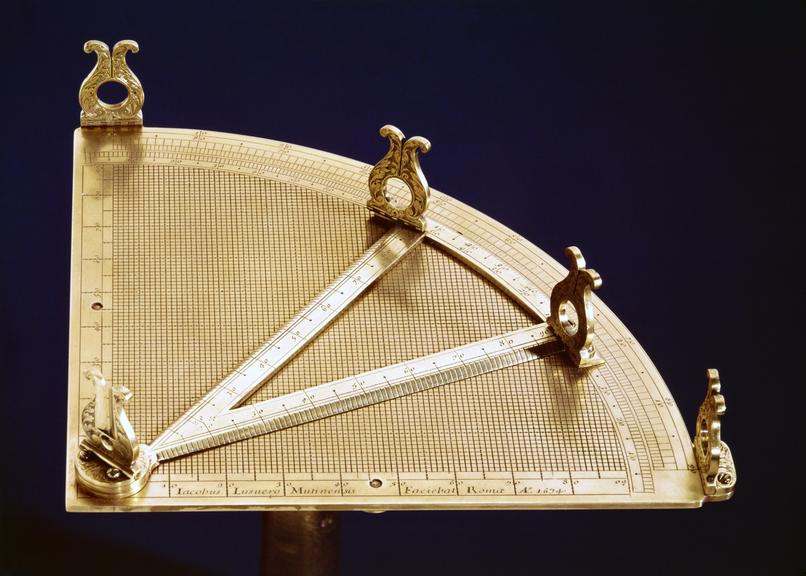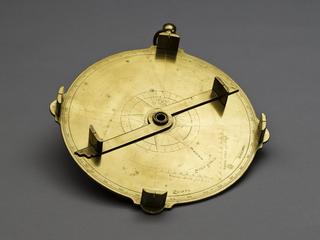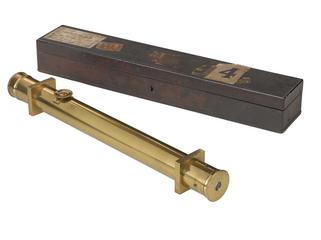
Surveying quadrant, 1674.
- maker:
- Jacobus Lusuerg and Francesco II d'Este




Surveying quadrant with sights, plotting scales and gunnery scale on the obverse, by J. Lusuerg, Rome, 1674
This quadrant, with sights, plotting scales and a gunnery scale on the obverse, was made in Rome by Jacob Lusuerg in 1674 and bears the coronet and arms of the Duke of Modena. Many members of the Lusuerg family in Rome were instrument makers, and several of them are represented in the Science Museum collections. A small version of an astronomical instrument, the gunnery quadrant measured vertical angles to give the altitudes of terrestrial objects and for setting artillery.
In its earliest form, the quadrant was used by astronomers to find the altitudes of the stars and planets. The reverse side of the instrument bears the coronet and arms of the Duke of Modena and a scale enabling the instrument to be used as an artillery quadrant.
Details
- Category:
- Surveying
- Object Number:
- 1880-200
- Materials:
- brass
- Measurements:
-
Overall: 85 mm x 165 mm x 150 mm, 0.74 kg
- type:
- surveying quadrant
- credit:
- Fulgence, Mons. (Paris)




